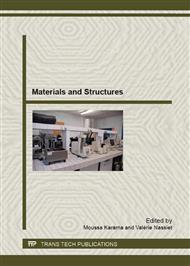p.1
p.9
p.17
p.25
p.33
p.41
p.49
p.57
p.65
Effect of Mesh Size and Mode Truncation on Reconstruction of Force Characteristics for Non Punctual Impacts on Composite Elastic Beams
Abstract:
dentifying characteristics of a force generated by non punctual impact is performed to better monitor the health of the impacted structure. This can be achieved through using an implemented structural model. For composite beams, the model can be constructed by means of the finite element method. In this work, the impact is assumed to be a uniform distributed pressure and the impact location is known. Reconstructing the force signal is performed by using regularized deconvolution techniques of the Toeplitz like equation giving the answer in terms of strains as function of the input force. Here, the generalized singular value decomposition based method is used in conjunction with truncation filtering. Quality of the reconstructed force is discussed as function of the mesh size and the mode truncation order.
Info:
Periodical:
Pages:
33-40
Citation:
Online since:
April 2013
Authors:
Price:
Сopyright:
© 2013 Trans Tech Publications Ltd. All Rights Reserved
Share:
Citation:


